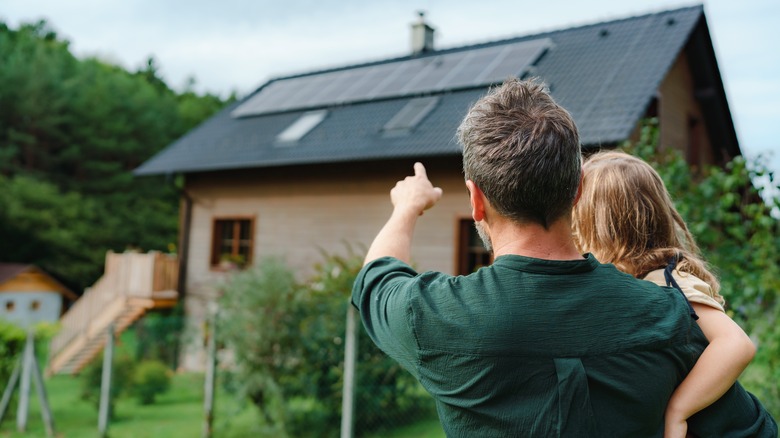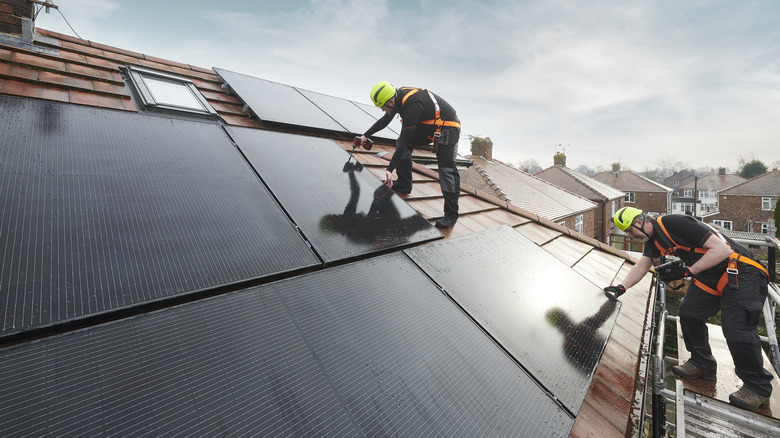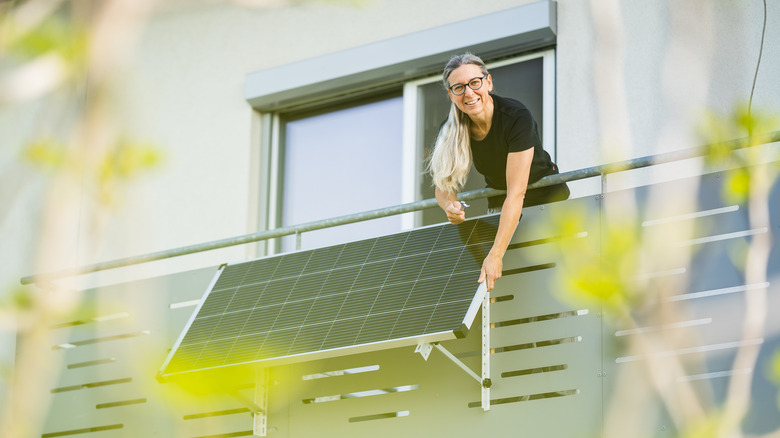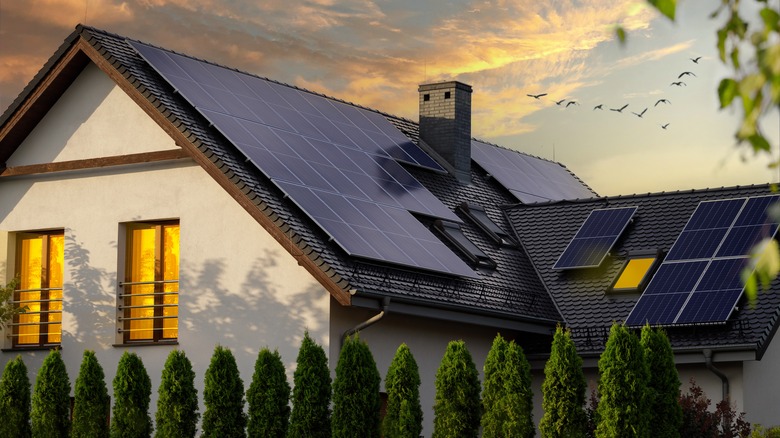
Halfpoint/Shutterstock
When it comes to ways to make the average household more eco-friendly, it’s always worth considering solar panels as a green energy alternative. Not only do solar panels help the environment in all sorts of ways, but they can also reduce your energy bill. That cost-saving benefit may stand out to some, considering solar panels aren’t the cheapest product on the market. As a result, many people view solar panel installation as a financial expense that will ultimately pay for itself over time through the money they consequently save on their electric bill.
However, there are a lot of factors that go into calculating how long it will take for you to pay off the initial investment and start saving. While it is definitely possible to save an equal amount of money to the upfront cost of the solar panel setup in the long run, some may be surprised at how long it generally takes to recoup that initial payment. Suffice to say, having solar panels for a large enough amount of time that they pay themselves off is a pretty long-term investment.
Solar panels can take around a decade to pay for themselves
Sturti/Getty Images
Based on estimates from sources like SolarReviews and Palmetto, it can up to a decade to have a solar panel setup completely pay for itself. The equation comes down to a few key factors, the first of which is the amount of money spent on the initial investment. Per Consumer Affairs, the average price of a 6-kW solar panel setup in the United States is $17,852. A significant chunk of that upfront cost does pay itself off within the first year by way of a federal income tax credit for using solar energy, which totals to a little less than one-third of the system’s price.
Unfortunately, the process slows down after that initial solar tax credit is sorted for the year of installation. The remaining two-thirds of the upfront price of the system mostly pays itself off through money saved on a user’s energy bill. A report from Gitnux indicates that solar panels allow the average household to save $85 monthly. That means each year, the average American will save $1,020, or roughly one-tenth of the system’s installation costs.
Of course, these statistics are estimates, and plenty of variation can occur based on situational factors. For instance, some states have a relatively shorter or lengthier solar payback period due to local variables like the cost of electricity. How many solar panels you need to power your home is also a crucial part of the equation.
Solar panels have a finite lifespan before needing repairs or replacement
Amriphoto/Getty Images
Like any technology exposed to the elements, solar panels will eventually start to break down and lose their efficiency. Unfortunately, it’s far more likely that users will have to outright replace solar panels at the end of their lifespan rather than simply repairing them — and that finite endpoint places a cap on the amount of money users can expect to save in the long run from a singular installation.
Per the Solar Energy Industries Association, the average solar panel system has a lifespan of anywhere from 20 to 30 years before it needs to be replaced. When factoring in the estimated 10 years that an installation needs to fully pay itself off, that means solar panels take anywhere from one-third to one-half of their entire life to actually pay for themselves. Once a system is no longer in a usable state, owners need to repeat the process all over again with a fresh installation.
On the bright side, the average lifespan of solar panels allows owners to enjoy additional savings beyond the initial payoff. If a solar panel installation lasts 20 years and pays for itself after the first decade, the second half of its lifespan results in pure savings. Users with a system that lasts 30 years can expect to see an equivalent return on investment nearly three times over when all is said and done. Of course, this money can then be used to fully subsidize the cost of a new solar panel installation.
Solar panels can also add to the value of a home
MAXSHOT.PL/Shutterstock
While having solar panels pay themselves off may generally be considered a long-term investment, there is at least one other major financial benefit that goes into effect almost immediately after installing such a system. Just as much as solar panels can be a monetary investment, they can also be an investment into the infrastructure of a modern household — and a pretty lucrative one, at that.
Research indicates that installing solar panels can increase your home’s value in the real estate market. According to a 2019 report from Zillow, homes equipped with solar energy systems sell for just over 4% more nationwide than equivalent homes without said systems. This percentage value can vary based on exact location, but most major areas in the United States seem to follow the trend of households with solar panel systems selling for higher prices.
Based on Zillow’s national estimate for the price of a median-valued home, the percentage increase from the presence of a solar energy system can equate to roughly $9,274. Combine this built-in value with the federal solar tax credit that owners receive from the initial year of installation and the total starts to approach the upfront cost of the system pretty quickly. As such, those considering selling their property in the near future could technically make back their investment and then some within a far shorter period than the typical decade-long payoff period for solar panels.
>>> Read full article>>>
Copyright for syndicated content belongs to the linked Source : SlashGear – https://www.slashgear.com/1555346/how-long-it-takes-solar-panels-to-pay-themselves-off/


































